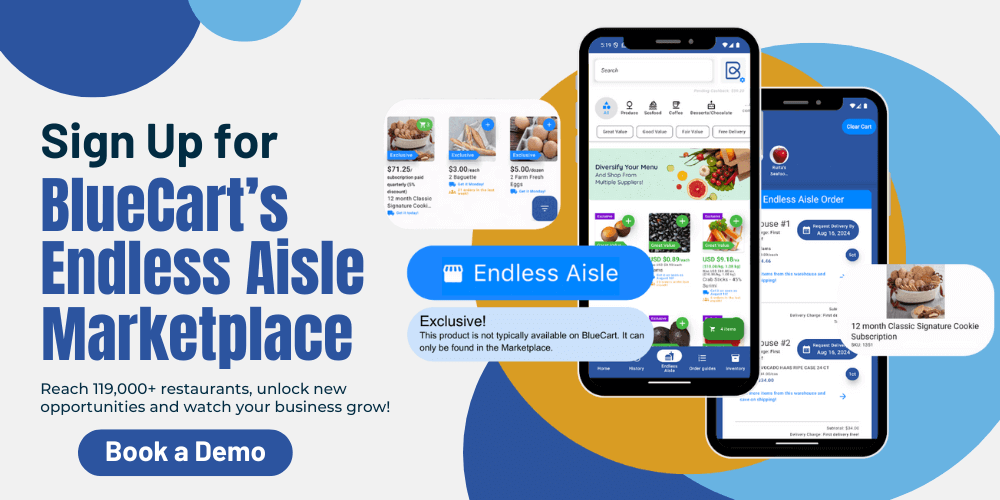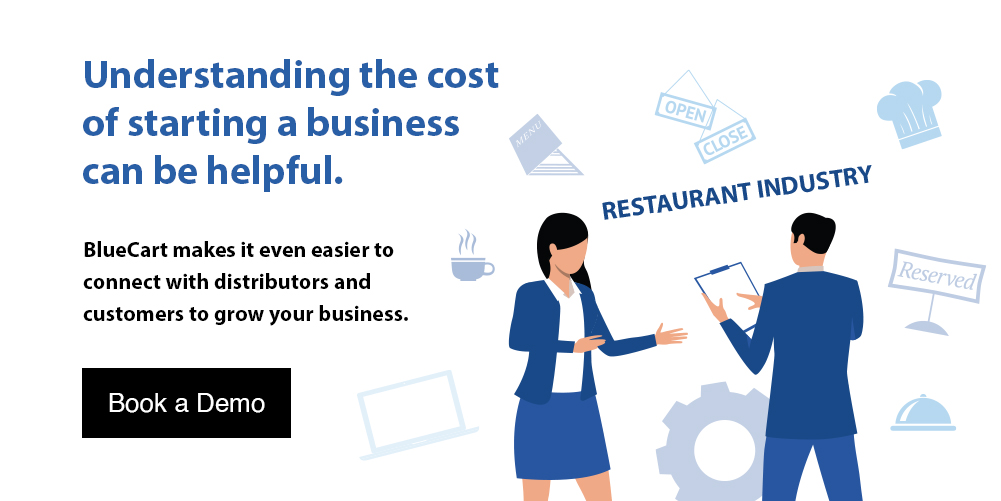Product distribution is one of the most important parts of supply chain management. The wholesale distribution industry is a vital link between product manufacturers and consumers globally.
eCommerce businesses and online retailers rely heavily on wholesale distributors to stock up on manufacturing inventory. With more than one business owner adopting various eCommerce business models such as dropshipping and subscription business, it is a great idea to start your wholesale distributorship business and master some efficient business systems.

Key Takeaway - Distributors are intermediaries between manufacturers and retailers. This means that everything from warehouse inventory management and labeling products to finding online retailers and shipping falls on distributors’ shoulders.
However, before you launch your wholesale distributorship business, you need to ask a very important question: how does distributorship work? Let’s review that question and explore some great tips on how to start a wholesale distributor business.
What Is Distributorship Business?
A distributorship business receives products directly from manufacturers or suppliers and resells them to retailers or wholesalers at a wholesale price. Wholesale distribution companies buy large quantities of wholesale products from manufacturers, store them in a distribution warehouse, and then resell them to eCommerce retailers.

Depending on the type of products, a wholesale distributor can sell goods directly to consumers, which is the D2C business model, or businesses, using the B2B eCommerce business model. Just like running a wholesale business, a wholesale distributorship business supplies high demand products in bulk quantities at a low cost.
Wholesale distributorship businesses help manufacturers invest less money and time targeting consumers and retailers that sell online. With less inventory carrying costs to worry about, product manufacturers can divert their resources into other aspects of production.
So, how does wholesale distributorship work? Let’s find out.
How Does Wholesale Distribution Work?
Normally, a distributorship is a legally binding arrangement between a producer and a distributor. For it to work, each side must achieve specified objectives.
For example, a wholesale food distribution agreement for distributing wholesale alcohol may require the distributor to purchase a minimum order quantity, MOQ, of a few hundred barrels of beer per week. In exchange, the manufacturer may give the distributor sole distribution rights of the product.
Wholesale distributors have solid connections with both the upstream and downstream elements of the supply chain. Upstream distributors maintain connections with their suppliers, who are frequently the companies that produce the goods they store and distribute.
The standard distribution process involves breaking down huge amounts of products and storing them in a wholesale food distribution center. It also involves selling and distributing the products downstream to other B2B online marketplace businesses in different industries such as the hospitality industry, restaurant industry, and eCommerce retail industry at wholesale pricing.
Setting up and optimizing the wholesale distribution channel is crucial for many business models that sell globally. Many online retailers, as well as customers, directly depend on wholesale distributors.
Like our wholesale content? You may want our wholesale purchase agreement template. Check out our shipping and handling eBook, too.
The majority of the time, wholesale distributors provide both customer support and a digital catalog with a large variety of unique product lines. To become value-added distributors, many also provide additional services.
As a result, a distributor's job description goes beyond merely selecting, packaging, bulk shipping, and delivering goods. It also includes providing customers with unique services and solutions such as kitting, installation, and servicing.
There are various types of wholesale distribution businesses. Some manufacturers do business with a certain type of distributor, and others do not mind as long as you keep to the wholesale distribution agreement.
Knowing the types of distribution business will help you decide on your unique selling point (USP) and business strategy. Let’s discuss the four types of distribution you can invest in to make the most profit.

4 Types of Wholesale Distributorship
Now, the types of wholesale distributorship should not be confused with the types of distribution channels. These are two different things.
The types of wholesale distributorship include the following:
- Direct distributorship: In direct distribution, distributors sell products directly to an online store or retailer rather than wholesalers.
- Intensive distributorship: With intensive distribution, a distributor leverages supplier relationship management strategies to build an active network of retailers and sell to as many large several retailers as possible.
- Selective distributorship: A selective distributor only sells products to wholesalers and retailers with the product manufacturer's target niche market.
- Exclusive distributorship: An exclusive distributor is the only legal distributor of that product.
A distribution channel, on the other hand, is a process or flow that a product passes through from its producer to the final consumer. Typically a product flows from its manufacturer to the wholesaler, then the retailer, and finally to its final consumer.
However, various business models keep popping up all over the internet. With more eCommerce businesses exploring the multifaceted benefits of the digital age, the distribution channel has grown.
Here are some main aspects of the distribution channel:
- Wholesalers
- Retailers
- Direct-to-consumer sales
- Internet
- Dropshippers
- Resellers
How to Start a Wholesale Distribution Business In 7 Steps
Now that you know the types of distribution business available, you can create your unique eCommerce business plan and build a business process flow to help run your business. Let’s discuss how to start a wholesale distribution business in seven steps:
- Write a Business Plan
Before starting your business you need to write a business plan. This will help you set goals and eCommerce KPIs for your business.
Your business plan should include your unique selling points (USPs) and value proposition. The truth is, a lot of business owners have realized just how viable the distribution business is and many are rushing to start one.
Need help navigating through the ever-competitive online eCommerce business space? Get expert advice on how to scale up your eCommerce business with our free Comprehensive eCommerce Business Guide eBook.
Some retailers and wholesale dropshipping suppliers are now looking at possibilities of reaching out to manufacturers by themselves, cutting short the distribution channel. This means you should be prepared for a lot of competition.
Creating your business plan early on will help you to stay ahead of the competition. Remember to add your wholesale marketing plan and financial projections.
- Choose Your Products
It’s important to choose high demand products in your target market. You may need to conduct a short survey with retailers to understand what your target market needs. Additionally, you can read up on the latest industry trends and carry out market research.
When choosing products, you need to consider your storage options. For instance, wholesale dairy products will require certain storage temperatures and conditions.
Another thing to consider is your budget. Manufacturers expect that a wholesale distributor will buy large quantities of products and will require an MOQ to proceed. You may find yourself in a sticky situation if you do not have a budget for this.
- Select Your Sales Strategy
Deciding on how you want to sell your products is crucial to the success of your wholesale distributorship business. There are various supply distribution models to choose from:
- Brokerage: Serving as a broker between a seller and a buyer.
- Online sales: Retailers and wholesalers complete all transactions online.
- Import and export: Buying local products to sell abroad or selling foreign products in your country.
- Payment and delivery: Requesting up-front payment for your products.
- Subscription billing: Setting recurring billing solutions for optimizing payments.
- Manage Your Inventory
With the right inventory management techniques, you can easily manage your wholesale inventory. Using an inventory tracking system will help you monitor warehouse inventory.
You can also use a wholesale distribution management software like BlueCart for order processing. The best wholesale distribution tools will help you manage delivery route optimization, payment processing, and provide an all-in-one eCommerce solution for your business.
- Get a Warehouse Management Plan
Finding adequate storage space is important since you’ll be buying large quantities of products. You can partner with a warehouse distribution business and outsource all your warehousing needs to them.
Another option is to find a warehouse facility or distribution center that will suit your needs and design a warehouse organization plan. It is important to design your warehouse to fit the storage conditions of your products.
Shipping frozen food can be a nightmare if you don't know where to start. Learn how to ship frozen food the right way.
- Find Your Manufacturing Partners
Online resources can help you locate a variety of manufacturing partners. Using a wholesale directory comes in handy. Searching for companies that produce the goods you wish to sell is another technique to find manufacturers.
Many companies have agents or other connections who bargain business deals with prospective vendors. Following your initial contact with these prospective business partners, decide on rates, discuss shipping the products to your warehouse, and–if necessary–execute wholesale distribution contracts.
You can agree to exclusivity with a single manufacturer, which decreases competition even more. This will inform any interested merchants that they must place their orders through your distribution company.
- Build Your Network of Retailers
Building your network of retailers is a vital step in starting your wholesale distributorship business. Having a huge network of retailers will help you clear inventory quickly and order new stock.
You can go to local events to establish trust with local retailers. In addition, using online marketing and networking strategies will allow you to grow your retailer community.
One way to engage your growing retailer base is by keeping them updated and always informed about new inventory. A great customer service system will help grow your supplier-retailer relationship.

Frequently Asked Questions About Wholesale Distributorship
Starting a new business comes with a lot of questions. Let’s answer some popular questions about starting a wholesale distributorship business.
What are the 4 Types of Distribution Channels?
The four types of distribution include the following:
- Producer
- Distributor/wholesaler
- Retailer
- Consumer
What Is the Difference Between a Vendor and a Distributor?
A distributor serves as an intermediary between manufacturers and retailers or vendors. Distributors buy products in large quantities and resell them in small quantities to vendors.
On the other hand, vendors serve as the final channel in the distribution workflow. They buy products from wholesale or retail distributors and sell directly to consumers.
Which Product Is Best for Distributorship?
There are a lot of high demand products that you can distribute. However, the products you select depend on your target market and industry.
Here’s a list of some top-performing wholesale distribution products:
- Wholesale produce
- Bakery products
- Wholesale dairy products
- Agricultural products
- Crockery products
Time to Deliver
There are a lot of great eCommerce business ideas. However, the wholesale distributorship business stands above many others with its benefits as well as large profit margins.
Most business owners fear the huge startup costs involved when starting. You can start with a simple dropshipping model. This will reduce your inventory carrying costs, eliminate shipping costs, and ultimately reduce your budget.
Although not advised, you can use your home or personal space as a storage space. While this may help you save on cost, you must create storage conditions that will help the shelf life of your products.
Besides all these, a wholesale distributorship business is a great way to make money. Implementing our recommendations and expert tips will give you the much-needed head start for your business.